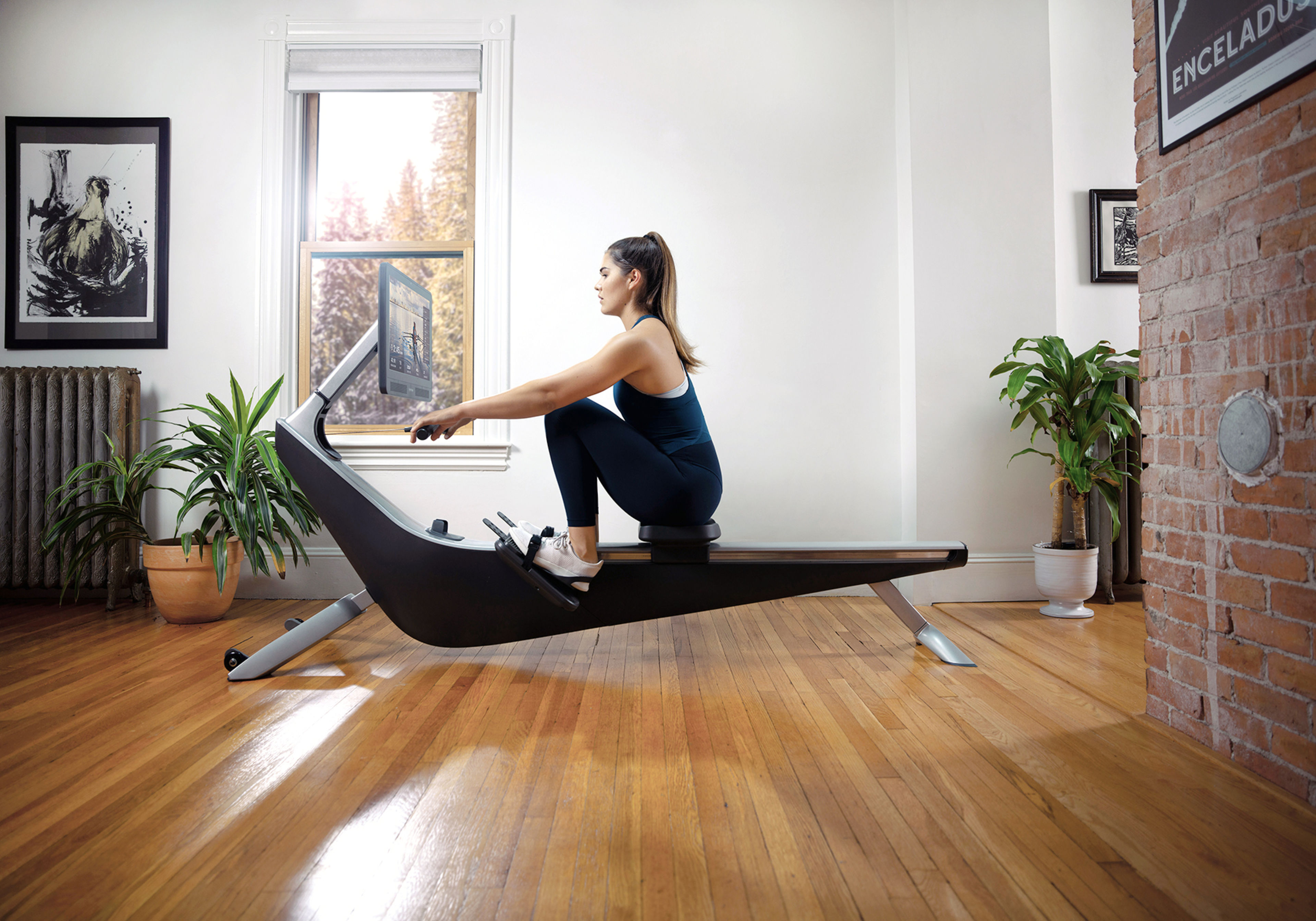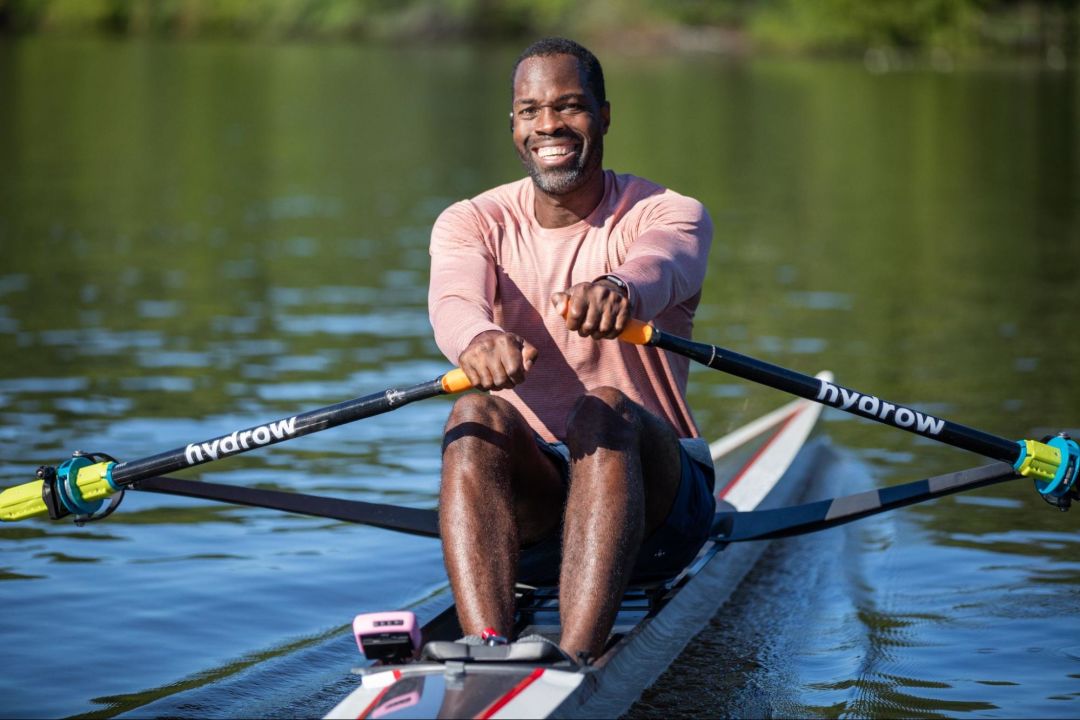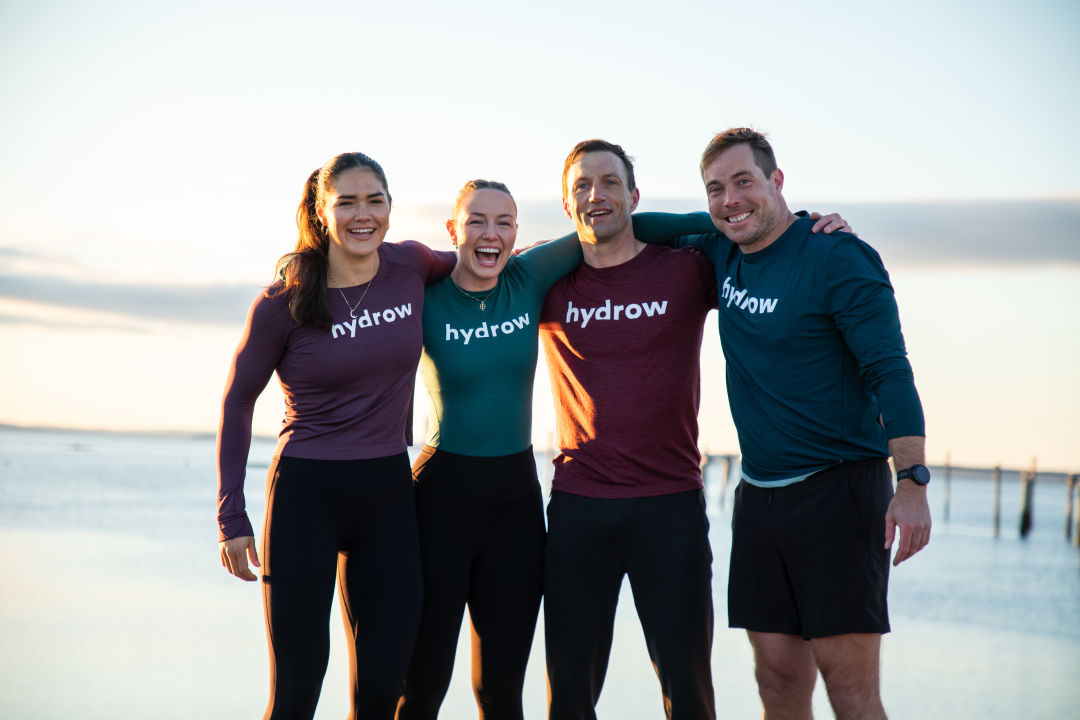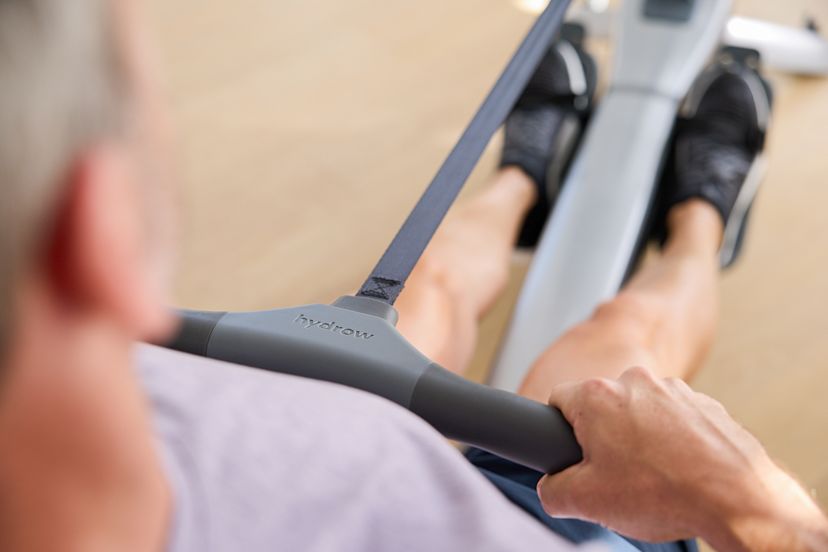How to Find a Rowing Workout That Works for You

An indoor rowing workout can come in many forms. As a sport, rowing can be an exciting challenge or the most peaceful part of your day. Rowing workouts are versatile and are very much what you make them because you get to choose how hard you push yourself.
If you’re looking for an intense sweat session to get your heart rate up, you can find that in rowing.
If you’re looking for a meditative 30-minute session to intentionally connect your mind and body, you can find that in rowing.
If you’re looking for a workout to increase your cardiovascular capacity or to help you gain strength and endurance, you can find that in rowing.
Rowing is an incredible workout that is accessible to many, and because it's low-impact and a full-body workout, it’s a smart choice for those looking to increase their fitness level no matter what other activities you do. Rowing machines also offer a great form of cross-training for runners, cyclists, and even powerlifters.
So, how do you get started in choosing a rower workout? Good news, that’s exactly why we’re here!
In this guide, you’ll learn:
The benefits of a rowing workout
Which muscles rowing workouts use
Proper rowing workout form
The different types of rowing workouts
Which type of rowing workout is best for you
How to incorporate rowing workouts into your fitness routine
Let’s get started!
The benefits of a rowing workout
If you’re considering incorporating rowing workouts into your current exercise routine, you likely want to know what kind of perks you can expect. The following are the main rowing machine benefits to keep in mind:
The physical benefits of rowing machines
Rowing workouts are a great way to incorporate cardio and strength training into one exercise. You’ll be working your muscles while getting a great cardiovascular workout. Rowing keeps your heart and lungs working hard as your muscles bring you through each stroke. This is one of the reasons astronauts rely on rowers for their workouts in space.
Having the ability to exercise multiple major muscle groups at one time is a major selling point for rowing workouts. Most workouts will only utilize arms, or legs, or core, but few will hit all at once. Rowing is great for burning fat while keeping impact low.

Experience the most immersive and efficient total-body workout with Hydrow.
The mental benefits of rowing machines
Another unique benefit of a rowing workout is the mental element. When you’re rowing, you get in sync with your mind and body. Especially when following a workout like Hydrow’s Athlete-led or self-guided workouts, you’ll be pulled into the immersive experience and intentionally connect with your body and how it moves.
Community and motivation
Another perk exclusive to rowing workouts is the community. While the rowing community as a whole is supportive and encouraging, our Hydrow community is filled with rowing enthusiasts who offer encouragement, support, and advice to fellow Members.
Rowing is also a great way to challenge yourself. If you love a good race, you can compete on the Hydrow leaderboard with your fellow teammates. The Hydrow puts everyone "in the same boat" by allowing people to row at the same time and do the same workout. You can even filter the leaderboard to specific ages and gender to get a more precise read on your ranking.
Related: Is Rowing a Good Workout?
Which muscles rowing workouts use
Rowing workouts engage an impressive 86% of your body’s muscles, which is almost double the amount of muscles worked by cycling or running.
But what does that really mean for you? Great question! It means that you’re getting an intense whole-body workout in a fraction of the time that you would in other forms of exercise.
From legs to core and back, shoulders and arms, you’ll experience a total-body workout. To maximize the impact of your rowing workout, it’s important that you learn and exercise proper rowing form.
We’ll dive deeper into proper rowing form in the next section of this article, but in short, each rowing stroke is broken into two different parts: the Drive and the Recovery. During the Drive, you will use the legs, core, and arms in that order. The Recovery will be the mirror of those movements.
No matter where you’re at in your rowing stroke, multiple muscles are being used. As you finesse your form, you’ll bring more power into each stroke, meaning you’ll be able to increase your resistance, too!
Proper rowing workout form
If you learn nothing else from this article, it should be that using proper form during your rower workout is the single most important thing you can do.
Why proper form matters
Proper rowing form reduces your risk of injury and improves your power in each stroke. It also balances the muscles you use, reducing strain and improving your full-body workout.
What proper form looks like
Proper rowing form has four phases: The Catch, The Drive, The Finish, and The Recovery. So let’s take a look step by step:
1. The Catch
This is the first motion. You’ll want to sit tall on your machine with your knees bent and ankles flexed — your shins should be vertical, with your arms reached out straight. Relax your shoulders and engage your core as you lean your shoulders just slightly in front of your hips, still keeping your back nice and tall.
2. The Drive
Your next motion is the drive. In this phase, you’ll start by pushing with your legs. Keeping your core strong and tight, you’ll press your legs down firmly, pushing you away from the screen while keeping your arms extended. Once you’ve fully extended your legs, you’ll swing your core, leaning back until your shoulders are behind your hips. The last part of this movement is to draw the handle toward your torso. This arm pull should end with your hands at the top of your abdominals.
3. The Finish
Now we’re onto our third phase: the finish. The finish position is essentially the opposite of the catch position. Your legs will be fully extended while you lean slightly back, with your hands (and elbows) pulled toward your torso.
Now, this position is not a resting place — simply a transition point between the “drive” and our final phase, the “recovery.”
4. The Recovery
We’re almost there! The recovery phase is the final motion in your stroke. You’ll be using the same movements from the drive phase, but in reverse. So, what does that look like?
First, your arms will extend back out. Then, you’ll rock your core forward, bringing your shoulders past your hips with your hands past your knees. Finally, you’ll draw your knees up, sliding the seat back toward the front of your rowing machine.
Congratulations! You’ve just learned to row! While it’s not quite as simple as reading an article on the internet and magically being able to apply your findings to real life, rowing doesn’t have to be overly complicated. By mastering proper form, you’ll set yourself up for a successful rowing workout (or even a rowing career someday).
So, how does one apply the proper rowing form to a workout? The next step is selecting the type of rowing workout that will best suit you.
The different types of rowing workouts
If you’re looking for guided rowing workouts, you’ll find a lot to choose from. On Hydrow’s platform, we have more than 4,000 workouts (and counting!) for you to choose from.
With so many workouts, making a choice can feel overwhelming, so where do you begin?
Beginner rowing workouts
Beginner rowing workouts are designed for — you guessed it! — beginners. These workouts take extra time to emphasize and teach proper technique, as well as to help familiarize you with rowing vocabulary.
Beginner workouts are typically lower intensity, with a focus on correct form and to get familiar with your rowing machine. Beginner rows are typically 10 to 15 minutes long, but can be 20 or even 30 minutes long as well.
Hydrow offers a Learn to Row series of three 15-minute workouts designed to teach you the basics of rowing and to get you comfortable on your Hydrow. Athletes Aquil, Sera, and James will teach you the fundamentals of rowing in these three short workouts, setting you up to take on one of the many additional beginner rowing workouts Hydrow has to offer.
Beginner rowing workout length: 10–15 minutes
Beginner rowing workout benefits: Focus on form and getting comfortable on your machine while learning to master your stroke.
HIIT rowing workouts
If you’re looking to incorporate a high intensity interval training (HIIT) style workout into your training regiment, you’ll be happy to find that rowing is an excellent option! When it comes to HIIT rowing workouts, you have two choices: rowing-only or hybrid, which mixes rowing with strength or mobility work.
Rowing-only HIIT workouts will alternate between higher- and lower-intensity rows at set intervals. You’ll row harder and faster for a short interval, then have an interval of recovery at a lighter or slower pace.
Hybrid HIIT workouts featuring rowing mixed with strength or mobility training will alternate between intervals of rowing and intervals of strength training. You might row for 60 seconds, then do light weight workouts, then go back to rowing. Combining these forms of exercise into a HIIT workout provides periods of recovery and rest while you get on and off your rowing machine. Similar to HIIT workouts, you can also do circuit training that incorporates rowing into your workout.
HIIT rowing workout length: 10–30 minutes
HIIT rowing workout benefits: Efficient way to boost cardiovascular fitness and strength in one workout
Endurance rowing workouts
Endurance rows help build your cardiovascular and muscular endurance, allowing you to tackle longer rows with more confidence as you learn and progress. Endurance rows are typically 20 to 30 minutes, but can be 45 minutes or longer.
The goal of endurance rowing workouts is to improve your endurance and stamina, while maintaining proper form and steady cadence.
Endurance rowing workout length: 20+ minutes
Endurance rowing workout benefits: Improves stamina and endurance
Warm-up and cool-down rowing workouts
Warm-up and cool-down rowing workouts are incorporated at the beginning or end of a longer workout. Sometimes this means before or after another rowing session, but sometimes that means before or after a strength training workout, yoga session, or even a run.
Warm-up rowing workouts are designed to awaken the body and muscles and get you loosened up and ready to take on a higher-intensity workout.
Cool-down rowing workouts are intended to help your body ease out of a high-intensity workout. These cool-down sessions help you regulate your heart rate and breathing, bringing you back down to your normal resting range.
Which type of rowing workout is best for you?
Now that you have an understanding of some different types of rowing workouts, which one is best for you? There are a handful of factors to consider when choosing your most effective rowing workout:
Available time for your workout
Level of rowing experience
Goal of your workout
Incorporation into other workouts
Preferred workout format
Current level of physical fitness
Depending on these factors, you should be able to determine which type of workout will help you reach your goals.
Regardless of which rowing workout you choose, it’s important that you maintain proper form throughout your workout. Focus on incorporating as much power as you can into each stroke before you work to increase your speed.
How to incorporate rowing workouts into your fitness routine
If you’re incorporating rowing into your workout regiment alongside other types of workouts, how much should you be rowing? Well, that depends on your goals.
Because rowing is a full-body workout that incorporates both strength and cardiovascular training, it fits nicely into a variety of workout routines. You can start by incorporating rowing two to three times per week in combination with running, triathlon training, cycling, or strength training. If rowing is your primary or preferred form of exercise, you can row three to six times a week while still incorporating other forms of exercise.
A Hydrow Membership offers a variety of workouts you can incorporate with rowing. Yoga, strength training, mobility, circuit and running programs are all offered in the Hydrow Membership platform.
Final thoughts
Now that you’ve been armed with the knowledge of the benefits of rowing, the proper form, the types of workouts and how to select one, and how to incorporate rowing workouts into your fitness routine, what’s next?
Rowing is an incredible asset to your health. As you learn to row and start regularly working rowing workouts into your life, you’ll experience both a physical and mental transformation.
How rowing is incorporated in your life is up to you. To familiarize yourself with rowing, you can get started by following a program of your choice as a Hydrow Member, or check out our Get To Know Your Hydrow Indoor Rowing Machine series on YouTube.

Explore Hydrow's library of 5,000+ rowing, circuit training, yoga, Pilates, and mobility workouts.







